Filter by
You must be a CTBUH Member to view this resource.

Guangzhou CTF Finance Centre
The CTF Guangzhou, Chow Tai Fook Centre, East Tower
Building
Completed
2016
Hotel / Residential / Office
Composite
LEED GOLD
530 m / 1,739 ft
111
5
355
251
1705
86
20 m/s
398,000 m² / 4,284,036 ft²
You must be a CTBUH Member to view this resource.
You must be a CTBUH Member to view this resource.
Proposed
Construction Start
Completed
Usually involved in the front end design, with a "typical" condition being that of a leadership role through either Schematic Design or Design Development, and then a monitoring role through the CD and CA phases.
Usually takes on the balance of the architectural effort not executed by the "Design Architect," typically responsible for the construction documents, conforming to local codes, etc. May often be referred to as "Executive," "Associate," or "Local" Architect, however, for consistency CTBUH uses the term "Architect of Record" exclusively.
The Design Engineer is usually involved in the front end design, typically taking the leadership role in the Schematic Design and Design Development, and then a monitoring role through the CD and CA phases.
The Peer Review Engineer traditionally comments on the information produced by another party, and to render second opinions, but not to initiate what the design looks like from the start.
The Design Engineer is usually involved in the front end design, typically taking the leadership role in the Schematic Design and Design Development, and then a monitoring role through the CD and CA phases.
The CTBUH lists a project manager when a specific firm has been commissioned to oversee this aspect of a tall building’s design/construction. When the project management efforts are handled by the developer, main contract, or architect, this field will be omitted.
Other Consultant refers to other organizations which provided significant consultation services for a building project (e.g. wind consultants, environmental consultants, fire and life safety consultants, etc).
These are firms that consult on the design of a building's façade. May often be referred to as "Cladding," "Envelope," "Exterior Wall," or "Curtain Wall" Consultant, however, for consistency CTBUH uses the term "Façade Consultant" exclusively.
Material Supplier refers to organizations which supplied significant systems/materials for a building project (e.g. elevator suppliers, facade suppliers, etc).
You must be a CTBUH Member to view this resource.
Usually involved in the front end design, with a "typical" condition being that of a leadership role through either Schematic Design or Design Development, and then a monitoring role through the CD and CA phases.
Usually takes on the balance of the architectural effort not executed by the "Design Architect," typically responsible for the construction documents, conforming to local codes, etc. May often be referred to as "Executive," "Associate," or "Local" Architect, however, for consistency CTBUH uses the term "Architect of Record" exclusively.
The Design Engineer is usually involved in the front end design, typically taking the leadership role in the Schematic Design and Design Development, and then a monitoring role through the CD and CA phases.
The Peer Review Engineer traditionally comments on the information produced by another party, and to render second opinions, but not to initiate what the design looks like from the start.
The Design Engineer is usually involved in the front end design, typically taking the leadership role in the Schematic Design and Design Development, and then a monitoring role through the CD and CA phases.
The CTBUH lists a project manager when a specific firm has been commissioned to oversee this aspect of a tall building’s design/construction. When the project management efforts are handled by the developer, main contract, or architect, this field will be omitted.
The main contractor is the supervisory contractor of all construction work on a project, management of sub-contractors and vendors, etc. May be referred to as "Construction Manager," however, for consistency CTBUH uses the term "Main Contractor" exclusively.
Other Consultant refers to other organizations which provided significant consultation services for a building project (e.g. wind consultants, environmental consultants, fire and life safety consultants, etc).
These are firms that consult on the design of a building's façade. May often be referred to as "Cladding," "Envelope," "Exterior Wall," or "Curtain Wall" Consultant, however, for consistency CTBUH uses the term "Façade Consultant" exclusively.
Material Supplier refers to organizations which supplied significant systems/materials for a building project (e.g. elevator suppliers, facade suppliers, etc).
12 September 2017 - CTBUH Research
21 December 2016 - CTBUH News
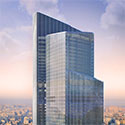
19 October 2016 | Guangzhou
Wednesday, October 19, 2016. Gaungzhou, China. Florence Chan of Kohn Pedersen Fox presents at the 2016 China Conference Plenary 4: "Guangzhou Developments" Since the reformation...
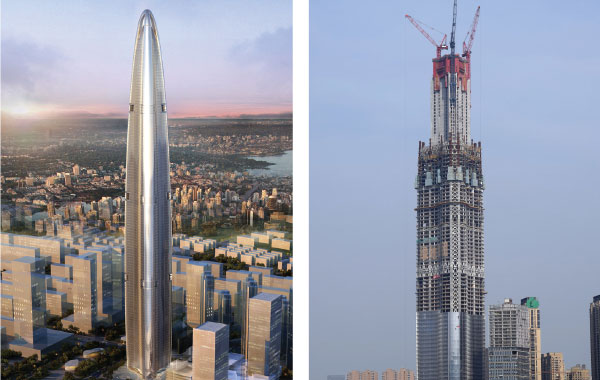
20 March 2020
CTBUH Research
This research paper undertakes a review of the 2012 report by the Council on Tall Buildings and Urban Habitat, “Tallest 20 in 2020: Entering the...
Guangzhou CTF Finance Centre is a mixed-use tower located across from Guangzhou International Finance Center and Canton Tower. The project is adjacent to a large central park and a subterranean retail concourse with transportation interchanges, integrating the project into the city and the wider region.
The design of Guangzhou CTF Finance Centre is derived from the efficient synthesis of its multiple uses. Its form is sculpted at four major transition points: office to residential, residential to hotel, hotel to crown, and crown to sky. Instead of tapering to accommodate the smaller floor plates required for different programs, the tower steps back at four angled parapets. These four setbacks allow for lush sky terraces and dramatic skylights.
Careful attention was paid to the material selection for the tower. Thus, a series of subtle terra cotta mullions line the tower’s elevations. This material played a very important role in both Eastern and Western history, and is also beneficial from an environmental standpoint. The embodied energy of terra cotta is far less than aluminum, glass, or steel. It is self-cleaning and corrosion-resistant. Moreover, it can be produced in many locations in China, reducing the environmental impact of shipping. These terra cotta mullions were designed to project out from the glass on an angle to provide shading on the exterior.
The building employs a number of energy efficient tools to reduce its environmental footprint. In addition to its strong multi-level connections to public transportation, the use of high-efficiency chillers and heat recovery from the water-cooled chiller condensers all contribute to the building’s sustainability.

19 October 2016 | Guangzhou
Wednesday, October 19, 2016. Gaungzhou, China. Florence Chan of Kohn Pedersen Fox presents at the 2016 China Conference Plenary 4: "Guangzhou Developments" Since the reformation...
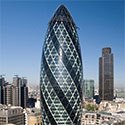
19 October 2016 | Guangzhou
One of the keys to attracting buyers and tenants for a contemporary tall building is a succinct marketing strategy and a robust understanding of how...
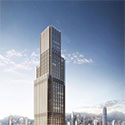
17 October 2016 | Guangzhou
New World Development Company Limited (NWD) has been a listed property developer in Hong Kong for nearly half a century. With businesses encompassing property development,...

17 September 2014 | Guangzhou
This presentation presents the thinking behind the design of the two supertall towers of Chow Tai Fook Enterprise– the Guangzhou CTF Finance Center and the...

20 September 2012 | Guangzhou
David Malott of Kohn Pedersen Fox Associates is interviewed by Jeff Herzer during the 2012 CTBUH Shanghai Congress at the Jin Mao, Shanghai. David discusses...

03 February 2010 | Guangzhou
KPF has designed some of the most iconic tall buildings around the world, including the Shanghai World Financial Centre which won the CTBUH 2008 Best...

20 March 2020
CTBUH Research
This research paper undertakes a review of the 2012 report by the Council on Tall Buildings and Urban Habitat, “Tallest 20 in 2020: Entering the...
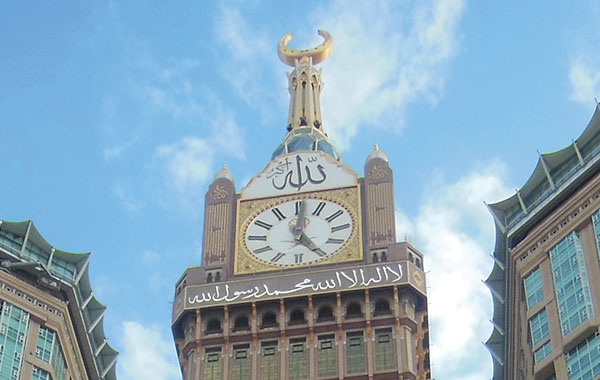
29 July 2019
Since humans first began constructing tall buildings, history has been cluttered with claims of all manner of “highest” records. In this study, we examine those...
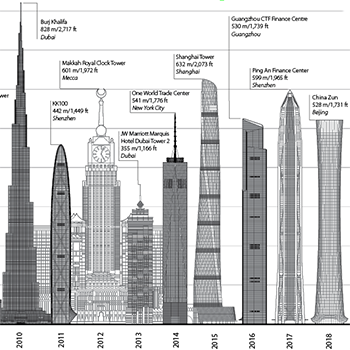
31 January 2019
CTBUH Research
In 2018, 143 buildings of 200 meters’ height or greater were completed. This is a slight decrease from 2017’s record-breaking total of 147, and it...
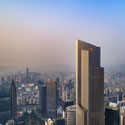
01 March 2018
Forth Bagley, Kohn Pederson Fox Associates
Increasingly, mixed-use, multi-program complexes are emerging as the standard development model around the world. As their prominence grows, these projects are becoming increasingly complex. Program...
.jpg)
10 January 2017
Jason Gabel, Annan Shehadi, Shawn Ursini & Marshall Gerometta, CTBUH
CTBUH has determined that 128 buildings of 200 meters’ height or greater were completed around the world in 2016 – setting a new record for...
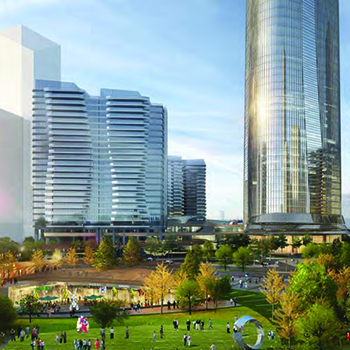
17 October 2016
David Ho, New World Development Company Limited
New World Development Company Limited (NWD) has been a listed property developer in Hong Kong for nearly half a century. With businesses encompassing property development,...
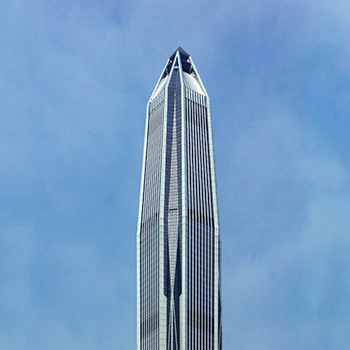
17 October 2016
CTBUH 2016 Conference Speakers
The CTBUH 2016 International Conference is being held in the three cities of the Pearl River Delta, the world’s largest “megacity,” projected to have 120...
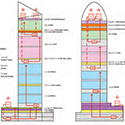
17 October 2016
Vincent Tse, Herbert Lam, Kenneth Li & Michael Sung, WSP | Parsons Brinckerhoff
This paper will address the mechanical, electrical, plumbing and drainage, and vertical transportation system (MEP/VTS) design challenges encountered during the design development of three unique,...

01 September 2015
Ye Haowen, China State Construction Engineering Corporation
Experience on the construction of several 100-plus-story skyscrapers including Guangzhou West Tower, Guangzhou East Tower, and Shenzhen’s KK100 is described considering the increasingly strong development...

16 September 2014
Wing Ip (David) Ho, Chung (Eddie) Yuk Fai, Hung (Annie) Lo & De Ming (Derry) Yu, New World Development
This paper presents the thinking behind the design of the two supertall towers of Chow Tai Fook Enterprise– the Guangzhou CTF Finance Center and the...
12 September 2017
CTBUH partnered with Guinness World Records to identify the commercial building with the fastest elevator speeds and longest vertical runs.
21 December 2016
CTBUH has certified the completion of Guangzhou CTF Finance Centre. At 530 meters it is the tallest building in Guangzhou, second tallest in China, and fifth tallest worldwide.
13 October 2016
The Council is pleased to announce the Top Company Rankings for numerous disciplines as derived from the list of projects appearing in 100 of the World’s Tallest Buildings.
20 January 2016
Plans for the 2016 CTBUH Conference are now well underway, beginning with initial meetings of the Conference Steering Committee in all three cities.
Subscribe below to receive periodic updates from CTBUH on the latest Tall Building and Urban news and CTBUH initiatives, including our monthly newsletter. Fields with a red asterisk (*) next to them are required.
View our privacy policy